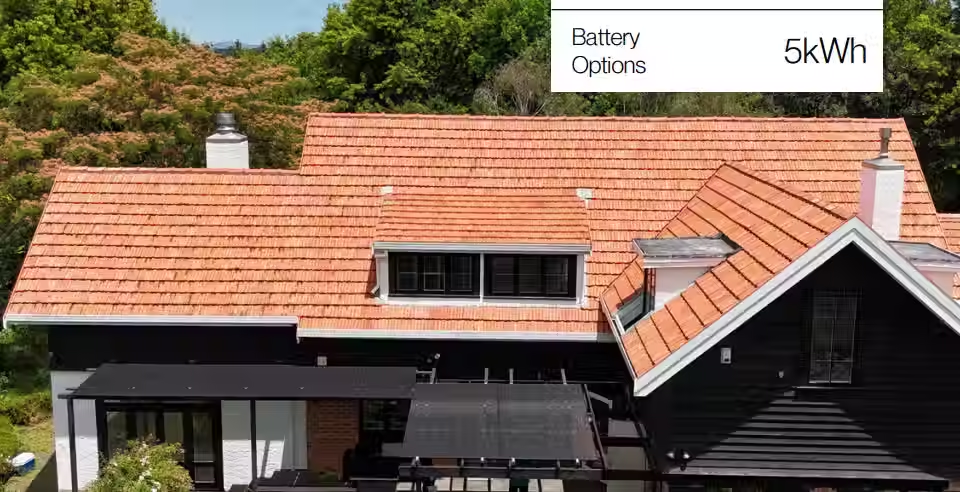5kW vs 10kW Solar System for Home Explained: Build Your Own Energy-Efficient Home Power Station
- HornTech NZ
- Oct 1
- 4 min read
Installing a solar system for home is about more than saving money. It’s an investment in sustainability, independence, and resilience. For many Kiwi households, rising electricity costs are a constant concern, and a solar power system offers long-term protection while also lowering environmental impact.

With solar panels on your roof and a properly designed setup, you can:
Save on electricity bills by generating clean energy directly on your roof. Every kilowatt-hour of self-consumed solar power is money you don’t spend on the grid.
Reduce your household’s carbon footprint by cutting reliance on fossil fuels and replacing it with renewable solar energy.
Keep your home powered during outages when paired with batteries, ensuring essential appliances like lights, internet, and refrigeration continue running.
Across New Zealand, families from Auckland to Patumahoe are already enjoying these benefits. Whether you install a compact 5kW system or a high-output 10kW setup, the result is greater control over your household’s energy future.
5kW vs 10kW Solar System for Home: Key Differences
When choosing between a 5kW solar system and a 10kW solar system for house, the best option depends on your home’s size, lifestyle, and power usage.
5kW Solar System
Best suited for small households of 2–3 people with daily consumption around 15–20 kWh.
Requires approximately 25–30 m² of roof space (12–14 solar panels).
Typical payback period is around 6–8 years.
Often paired with a 5 kWh starter battery, with the option to expand later as needs grow.
10kW Solar System
Designed for larger families of 4–6 people, or homes with high electricity demand from EV charging, pools, or multiple heat pumps.
Requires a bigger roof area of about 50–60 m² (20–24 solar panels).
Payback period is shorter, typically around 5–7 years thanks to higher generation and savings.
Works best with a 10–15 kWh battery to cover evening use and provide reliable backup power.
Solar System Components & Installation Essentials
A complete solar system for house includes several core components, each playing a vital role in performance and reliability.
Converts the DC power from solar panels into usable AC electricity for your home.
5kW systems usually rely on single-phase hybrid inverters.
10kW systems typically need three-phase inverters to manage heavier electrical loads.
Lithium Iron Phosphate (LiFePO₄) batteries are widely recommended for their safety, efficiency, and long lifespan.
5kW systems: start with a 5 kWh battery, expandable later.
10kW systems: usually paired with 10–15 kWh batteries to cover night-time demand and provide backup during outages.
Grid Options
Grid-tied: Most common setup, allowing households to export excess energy back to the grid.
Grid-tied with backup: Offers security during blackouts by powering essential loads.
Off-grid: Requires larger battery banks and often a backup generator, best for rural or remote homes.
Installation Considerations
A north-facing roof with a 25–35° tilt is optimal for maximum solar output in Auckland.
New builds can integrate solar neatly with concealed wiring, ensuring a clean aesthetic, as demonstrated in Apollo Energy’s North Shore project.
Inverters and batteries should be installed in shaded, ventilated, and weather-protected areas such as a garage or utility room.
Real Returns: Payback, Subsidies, and Energy Prices
Estimated Annual Output & Savings
5kW system: Generates ~6,500 kWh per year, saving about NZD $1,400; payback in 6–8 years.
8kW system: Generates ~10,400 kWh per year, saving about NZD $2,300; payback in 6–7 years.
10kW system: Generates ~13,000 kWh per year, saving about NZD $2,800; payback in 5–7 years.
Additional Notes
Savings mainly come from self-consumption, valued at around NZD $0.30–0.35 per kWh.
Surplus exported to the grid earns about NZD $0.07–0.17 per kWh, depending on the electricity retailer.
As power prices continue rising by 3–5% annually, the effective payback time often becomes shorter.
Government Incentives
Currently, there is no nationwide solar rebate in New Zealand.
Proposed policies suggest subsidies of up to NZD $2,000 for solar panels and another NZD $2,000 for batteries.
Some community and public housing projects may qualify for renewable energy funding through targeted government schemes.
Apollo Energy Case Studies: Real NZ Household Installations
Apollo Energy provides several real-world examples of how a solar power system transforms everyday Kiwi households:
Schnapper Rock (10kW + 10kWh Battery): Produced more than 1,300 kWh per month, surpassing predictions, lowering bills, and providing reliable battery backup.
North Shore (10kW New Build Integration): Installed during house construction with concealed cabling for a seamless, modern look.
Patumahoe (5kW System): An affordable entry-level installation that delivered immediate monthly savings while remaining modular for future expansion.
Auckland (8kW + 10kWh Battery): A balanced option for medium-sized families, offering strong savings alongside blackout protection.
These solar energy projects show that whether your goal is cost savings, resilience, or aesthetics, there’s a solar solution tailored to your needs.
Conclusion
A solar power system turns your house into a true energy-efficient home power station. The right choice depends on your lifestyle, energy use, and long-term goals:
5kW systems: Perfect for smaller homes, cost-effective, and expandable.
10kW systems: Ideal for large families with higher demand, offering faster ROI and strong energy security.
8kW systems: The middle ground, well-suited for households preparing for EVs or future energy growth.
With proven success from Apollo Energy’s real installations across Auckland, New Zealand households can confidently invest in the right solar system for home and enjoy decades of clean, affordable, and reliable power.




Comments